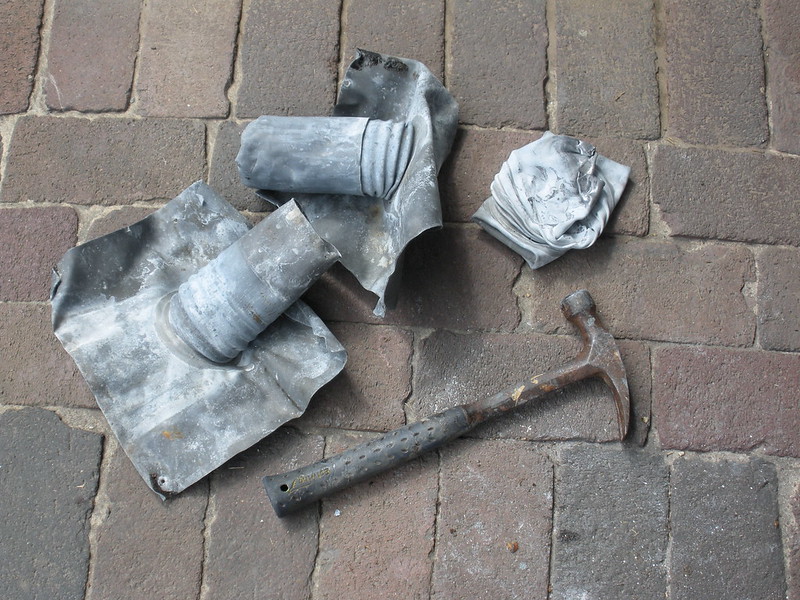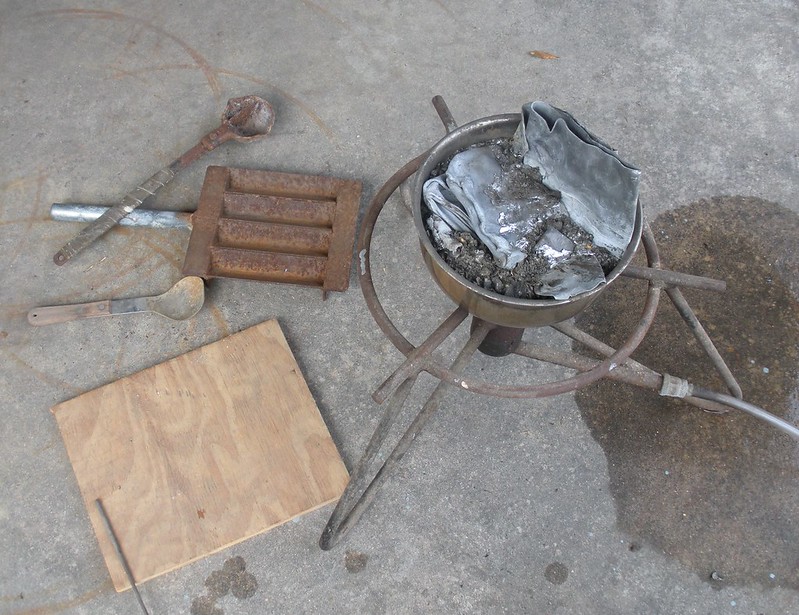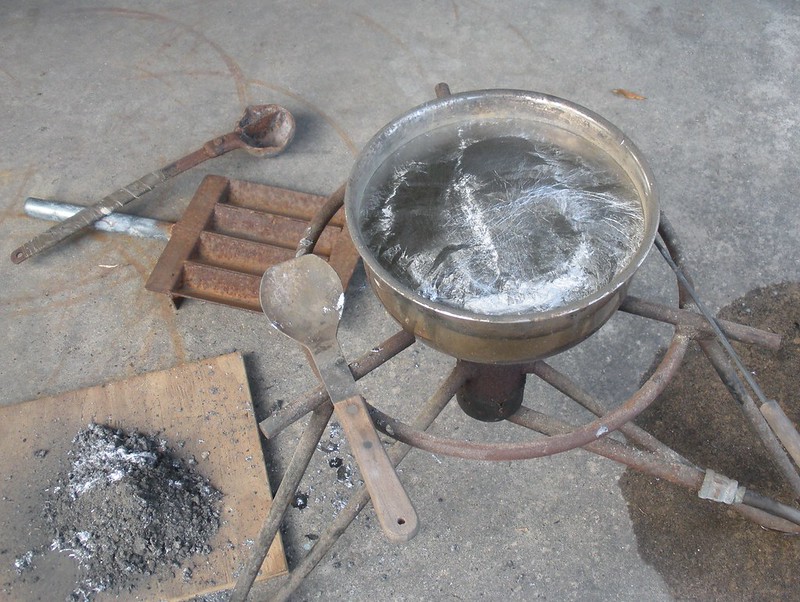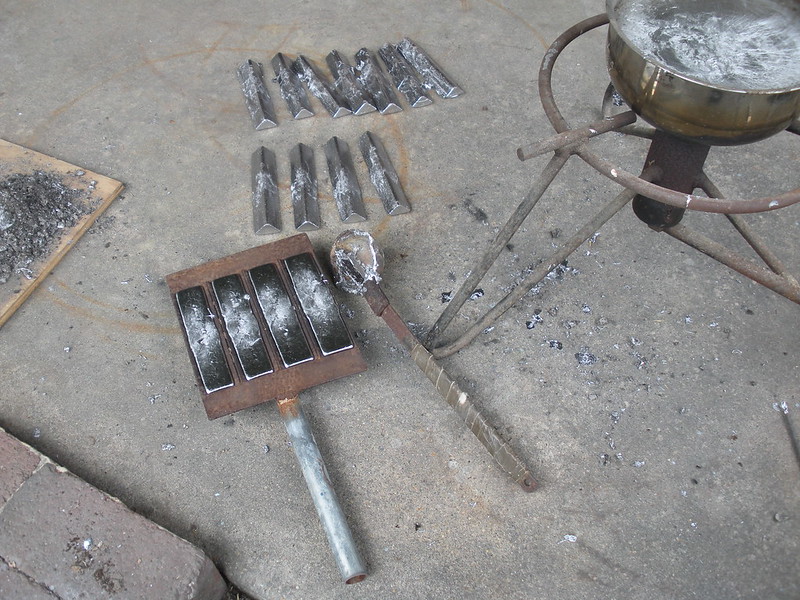A while back I posted an answer to one of the many “where do you get your lead” threads. I said to make friends with a roofer. A subsequent response to my post made by another member was “I have redone several roofs, and have never seen any lead”. Well just now, and just for the asking, I picked up three old lead boots off a re-roof job. Brought them home and they weigh almost 12 pounds total. There is a little shingle stuck to one so let’s say they clean up and melt to an even eleven pounds. At 7000 grains to the pound that is 77,000 grains. Or, over four hundred .50 caliber balls if my public-school math is correct (no guarantees).
I save them up and every few years when I feel like it I set up to melt them in a small round-bottom cast-iron pot on my turkey fryer burner. I pound them more or less flattish so I can fit them in the pot, stuck on trash and all. Skim the top and let cool. The next day I turn the pot over and have a pot sized ingot. I haven’t weighed any but they stack well, fit back in the pot, and keep FOREVER. When I recommend “finding” lead from roofing, I swear I am not making it up as I have done it, and continue to do so.
I save them up and every few years when I feel like it I set up to melt them in a small round-bottom cast-iron pot on my turkey fryer burner. I pound them more or less flattish so I can fit them in the pot, stuck on trash and all. Skim the top and let cool. The next day I turn the pot over and have a pot sized ingot. I haven’t weighed any but they stack well, fit back in the pot, and keep FOREVER. When I recommend “finding” lead from roofing, I swear I am not making it up as I have done it, and continue to do so.













